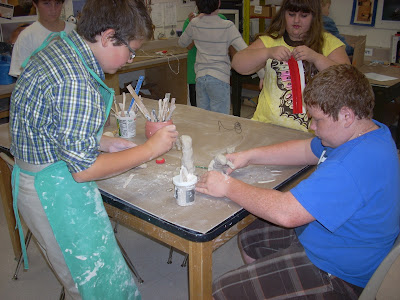Claymation!
The 7th grader who made this animation claimed she was not very good with computers, yet she produced this project all on her own,
figuring out how to use imovie to make her animation, add music, dub in her own voice, create titles and add sound effects.
Two stop action animation projects were recently completed in one 7th grade class. Students set up tripods, crafted characters and scenery and took hundreds of photographs to make their short films. Theyused imovie on the classroom computers to make their photographs come to life, adding sound effects, titles and music.
"K" & "L" work together to add a snowstorm scene to their animation using a hand-textured painting by "Z"
It didn’t take the 5th graders very long to notice the equipment and begin their own projects. These students learned about the process of stop-action animation last year at Thatcher Brook, and have been able to use their prior experience to begin their projects in the art studio this year.
Meanwhile, another team of 7th graders created a hysterical movie, filming through the built-in camera on the Mac, employing a combination of live action, drawn backgrounds, special visual effects,custom sound track and a cast of naughty, rude reckless lizards.




































